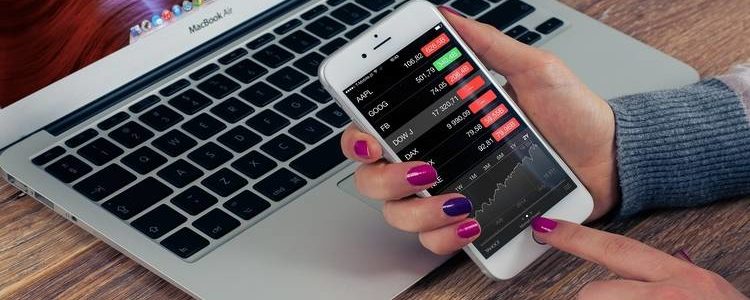Technology has had a massive impact on our lives and is generally regarded to have improved our social lives, businesses, governments and education. Unless you are a broker or an investor not much thought is given as to the impact technology has had on the productivity of The Stock Market. The success of The London Stock Exchange has a positive influence on our economy in the UK and thanks to the rise of technology it is now ranked third most profitable stock exchange in the world. Although it hasn’t always been an easy ride and there have been many disasters on the way. Lots of SMEs might benefit from hiring a top-class IT support company in London to help navigate modern disruptive technologies.
The rise of the dot.com companies
The increased use of the internet in the 1990s caused a surge of websites dedicated to selling products or services online. These companies didn’t always make a profit but concentrated on building up traffic to their websites and faster and better connectivity. As connectivity to the internet grew Venture capitalists became interested in investing in the what they saw as the future market. In 1999 many dot.com companies such as ‘lastminute.com’ and ‘’boo.com’ were able to make initial public offerings of their stock at high prices because of all the hype surrounding them. The London Stock Exchange was buzzing with these new exciting flotations. Choosing the path of “growth over profit” requires ever-increasing amounts of capital and it wasn’t long before what is referred to as the “dot.com bubble” started to burst. Today practically the whole population has access to the internet but back then not so many people owned PCs and there was mistrust about buying online. Boo.com was one of the companies to go into receivership after spending over £100 million in just 6 months. Ernst Malmsen founder of Boo.com said later “The internet was new back then: we were the pioneers. Today the technology is so accessible – “
Lastminute.com along with Amazon and Google managed to stay afloat despite their share prices plummeting in the crash by riding the storm. Many people believe that all the speculating around the dot.com bubble helped to build the internet we have today.
Jeff Bezos, founder and CEO of Amazon said of that time: “Because, you know, resilience – if you think of it in terms of the Gold Rush, then you’d be pretty depressed right now because the last nugget of gold would be gone. But the good thing is, with innovation, there isn’t a last nugget. Every new thing creates two new questions and two new opportunities.”
Manipulation of markets through social media
The long held belief that ‘Any publicity is good ‘is not always the case when it comes to Social media campaigns. Misinformation such as rumours of a fall in a company’s stock price or even as in the case of Qantas in 2010 when a false rumour on Twitter about a plane crash caused their stock to fall. Sometimes positive rumours about a company are started deliberately to start investors buying shares that push the prices up which can then be sold off making a profit for the fraudsters who cash them in before the prices fall. This practice is referred to as “Pump and dump” There was the recent example of Rapper 50 cents, whose use of Twitter to tell his followers about an excellent opportunity, caused the price of a penny stock he had invested in to increase dramatically making him millions of dollars profit. (Not implying that he caused the rise deliberately of course)
We are all subject to digital manipulation and a recent survey in the UK has shown that 62% of brokers and heads of trading desks believe social media sentiment influences share prices.
Electronic trading
Nearly thirty years ago in 1986 The London Stock Exchange changed over to trading by computer rather than face to face on the market floor. Not since the introduction of the telephone had there been such great changes at the LSE. Information Technology is all about calculations and data and so is Stock Trading, it was an inevitable match that increased efficiency and organisation. Today the high speed computers used by traders can broker a deal in nanoseconds much quicker than a human. The introduction of Algorithms into the markets has revolutionised the way stock brokers decide what stocks to buy and sell. Algorithm Trading uses computer programmes that follow certain instructions to calculate chart patterns in order to make safe investments. Terrence Hendershott(faculty director at Berkeley -Haas) described them thus: ”Algorithms typically determine the timing, price, quantity, and routing of orders, dynamically monitoring market conditions across different securities and trading venues, …..”
Along with the benefits there will also be fraudsters manipulating the price of stocks. In April this year Commodities trader Navinder Singh Sarao was arrested at his home in London in connection with the 2010 “Flash Crash” that rocked global markets. According to the Commodities Futures Trading Commission, Sarao spoofed S&P futures, called “E-Minis,” from 2010 to 2014 by layering algorithms. E-minis are electronically traded futures contracts that represent a percentage of a corresponding standard futures contract.
Alongside high speed predictions other ways in which technology has impacted on stock trading include-direct mail campaigns which can raise the price of stocks quickly,websites and online newspapers such as The FT and the WSJ with immediate news on takeovers and prices enabling traders to make more informed choices.
It is clear the stock exchange will continue to evolve more sophisticated ways of dealing as technology continues to advance. Big Data will be able to be used for measuring market psychology, as despite the success of automated trading the human element will continue to be needed in the computer’s calculations.
For over 20 years we have been an IT consultancy worthy of approval by clients and vendors alike. We draw on vast experience in serving our markets and helping our clients grow.
